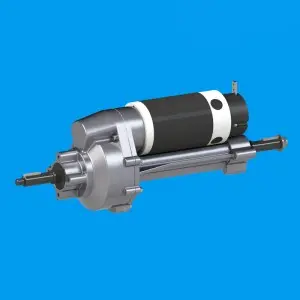Transaxles play a vital role in the operation of modern vehicles, ensuring optimal power transmission and smooth gear changes. As an important part of the powertrain, the transaxle not only transmits power from the engine to the wheels, but also monitors the gear shifting process. In this blog, we’ll explore the inner workings of the transaxle and explain how it knows when to shift gears.
The Basics: What is a transaxle?
Before we delve into the transmission mechanism, let’s first understand what a transaxle is. The transaxle is a complex unit that combines the functions of a transmission and an axle. It’s typically found in front-wheel drive vehicles and some all-wheel drive cars. Essentially, a transaxle is made up of three main components: the transmission, the differential, and the axle.
How does a transaxle work?
To understand how a transaxle knows when to shift gears, we must understand how it works. Transaxles operate primarily on the principles of gear ratio and torque conversion. The transmission section of the transaxle contains multiple gear sets that adjust the gear ratios based on the vehicle’s speed and load.
Sensor usage:
The transaxle uses a series of sensors and control modules to collect and process real-time data, ultimately determining the best time to shift gears. These sensors include speed sensor, throttle position sensor, vehicle speed sensor and transmission oil temperature sensor.
speed sensor:
Speed sensors, also called input/output sensors, measure the rotational speed of components such as the engine crankshaft, transmission input shaft, and output shaft. By constantly monitoring speed, the transaxle can calculate the rate of change and decide when a gear change is needed.
Throttle position sensor:
The throttle position sensor monitors the position of the accelerator pedal and provides necessary feedback to the engine control module (ECM). By analyzing throttle position and engine load, the ECM communicates with the transaxle control module (TCM) to determine the appropriate gear for optimal performance.
Vehicle speed sensor:
The vehicle speed sensor is located on the transaxle differential and generates a signal based on the rotational speed of the wheels. This information is critical in determining the vehicle’s speed, wheel slip, and potential shift adjustments.
Transmission oil temperature sensor:
To ensure transaxle longevity and smooth operation, a transmission fluid temperature sensor monitors the temperature of the transmission fluid. The TCM uses this information to adjust shift timing based on fluid viscosity, preventing premature shifts or transmission damage.
Control modules and actuators:
Data collected from various sensors is processed by the TCM, which converts it into electrical signals to activate appropriate actuators. These actuators include solenoid valves that engage and disengage the clutch, thereby enabling gear changes. TCM uses algorithms and pre-programmed shift maps to determine accurate shift times and sequences based on dynamic driving conditions.

In summary, the transaxle uses a complex network of sensors, control modules and actuators to manage gear changes. By continuously monitoring data such as speed, throttle position, vehicle speed and transmission oil temperature, the transaxle can make accurate decisions about shift timing. This sophisticated system ensures smooth and efficient gear changes, optimizing vehicle performance and fuel efficiency. Understanding how the transaxle knows when to shift will undoubtedly enhance our appreciation of the advanced engineering of modern automotive drivetrains.
Post time: Dec-01-2023

